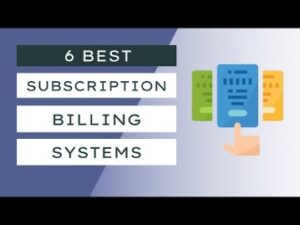A payroll tax holiday is a type of deferred tax liability that allows businesses to put off paying their payroll taxes until a later date. The tax holiday represents a financial benefit to the company today, but a liability to the company down the road. The income statement, or profit and loss statement, also lists expenses related to taxes. The statement will determine pre-tax income and subtract any tax payments to determine the net income after taxes.
- The sales tax rate differs based on where your business has a physical presence.
- In other words, there needs to be a prospect that the deferred tax asset will be utilized in the future.
- Income tax payable is a term given to a business organization’s tax liability to the government where it operates.
- The current income tax payable measurement is done by using the tax base and tax rates applicable for reporting.
It explains how much tax a business entity should have paid to tax authorities; however, a different amount is realized due to tax accounting and accounting rules. Different treatments cause timing differences that are https://kelleysbookkeeping.com/the-difference-between-a-trial-balance-and-balance/ temporary in nature. S-Corp’s and LLC’s don’t pay taxes, so how can they have deferred taxes? Everyone involved in the financial results of a pass-through entity understands the entity does pay taxes on income earned.
Tax expense calculation
This difference in tax payment and liability creates a deferred tax asset. This creates a temporary positive difference between the company’s accounting earnings and taxable income, as well as a deferred tax liability. The deferred tax liability on a company balance sheet represents a future tax payment that the company is obligated to pay in the future. This blog article will take you through an understanding of current tax payable, current tax liability, and its treatment balance sheet. The financial statements of a company tell about different aspects of the business. Financial health, future growth prospects, underlying problems, expenses, revenues, liabilities, and assets are shown in income statements and balance sheets.
What are current tax liabilities on a balance sheet?
Income tax payable is the financial accounting term for a current tax liability reported on a company's balance sheet. The balance-sheet amount for income tax payable equals the amount of taxes due to be paid to government tax agencies within 12 months.
Also, the deferred tax liability only has value if the company is expected to be profitable and owe taxes in the future. The accounting can be complex and hiring an M&A advisor to help sort it out may be wise. Deferred tax liability is the kind of thing that can sneak up on people during an M&A negotiation and disrupt a closing late in the process. Differences in depreciation methods for book income and taxable income generate temporary differences. The IRS may allow a firm to use an accelerated method of depreciation, which generates more tax expense in the early years of an asset’s life and less expense in later years. A deferred tax liability (DTL) is a tax payment that a company has listed on its balance sheet, but does not have to be paid until a future tax filing.
Sales tax liability
There are several aspects of your business that the government enforces taxes on. To stay legally compliant, you must stay on top of your small business tax liability. There is no deferred tax Understanding Current Tax Liabilities In Balance Sheet on the company balance sheet to remind financial statement users of looming future tax obligations. To counter the high cost of taxes, the IRS lets you claim tax deductions for certain things.

However, they are distinctly different items from an accounting point of view because income tax payable is a tax that is yet to be paid. However, if there is a deferred tax liability or deferred tax asset, the difference between tax expense and tax payable exists. There might be a difference between tax accounting and internal accounting, as discussed earlier.
Deferred tax liability examples
For employees, these taxes are withheld from their wages in the form of FICA tax, which is an employer and employee tax. Self-employed individuals pay these taxes in the form of self-employment tax. You don’t know what years you’ll be eligible to use the carryforwards or whether you can use them all before the tax law prevents you from carrying the loss forward into future years.

